Gardening with Hardy Succulents
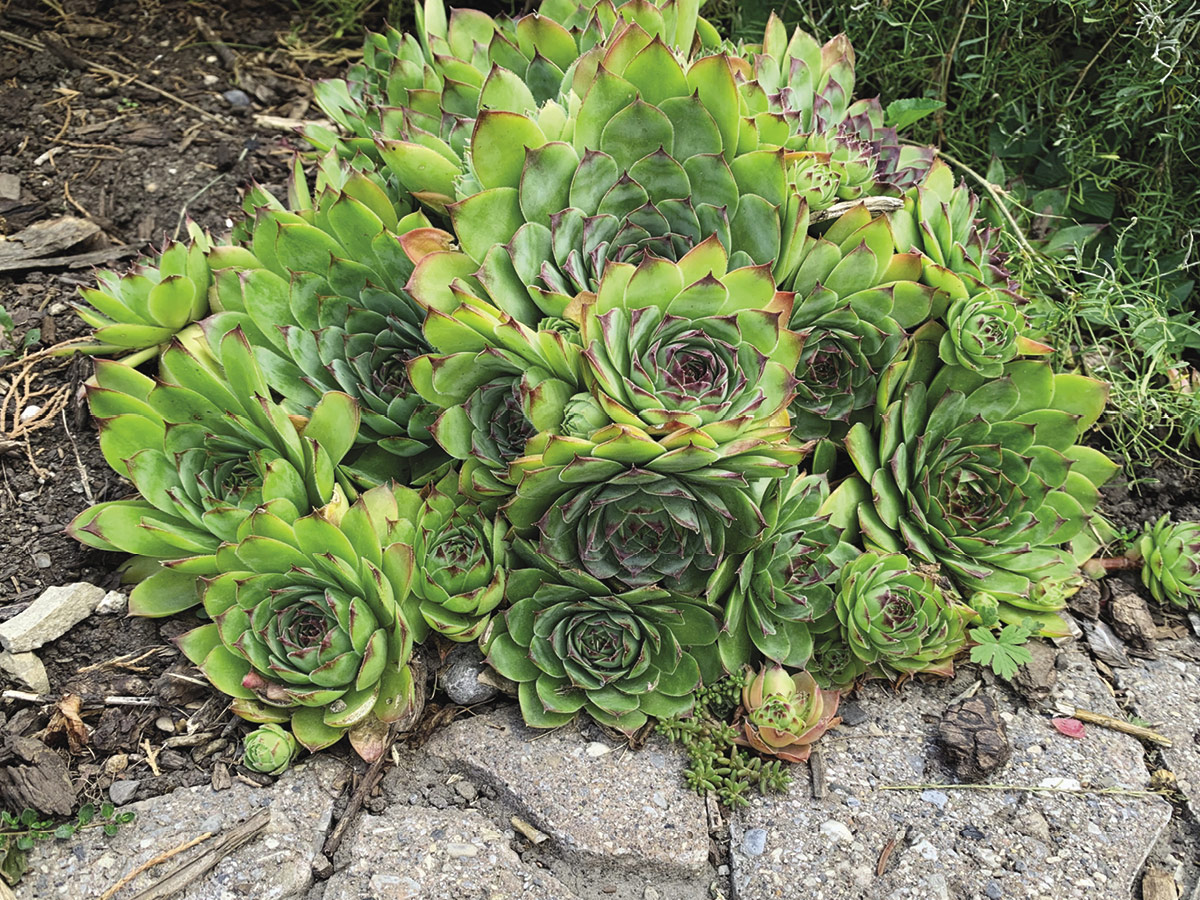
Succulents are a fascinating group of plants. The variety in colour, shape, texture, and size make these drought-loving plants interesting garden subjects. The majority hail from much warmer climates and so are relegated to houseplants or outdoor container plants. However, a smaller subgroup performs admirably in our chillier conditions.
Succulent plants have evolved to grow in a variety of inhospitable environments. Thick, fleshy leaves, stems, and roots have specialized water-storing tissues that enable them to quickly absorb water during times of plenty and survive on their reserves during drought. Their root systems tend to be shallow and spreading, enabling them to absorb moisture from a wider area. Planting in a gravelly mound will help ensure good drainage. Sitting in cold, wet soil during a winter thaw can kill these otherwise resilient plants. All but a very few require full sun.
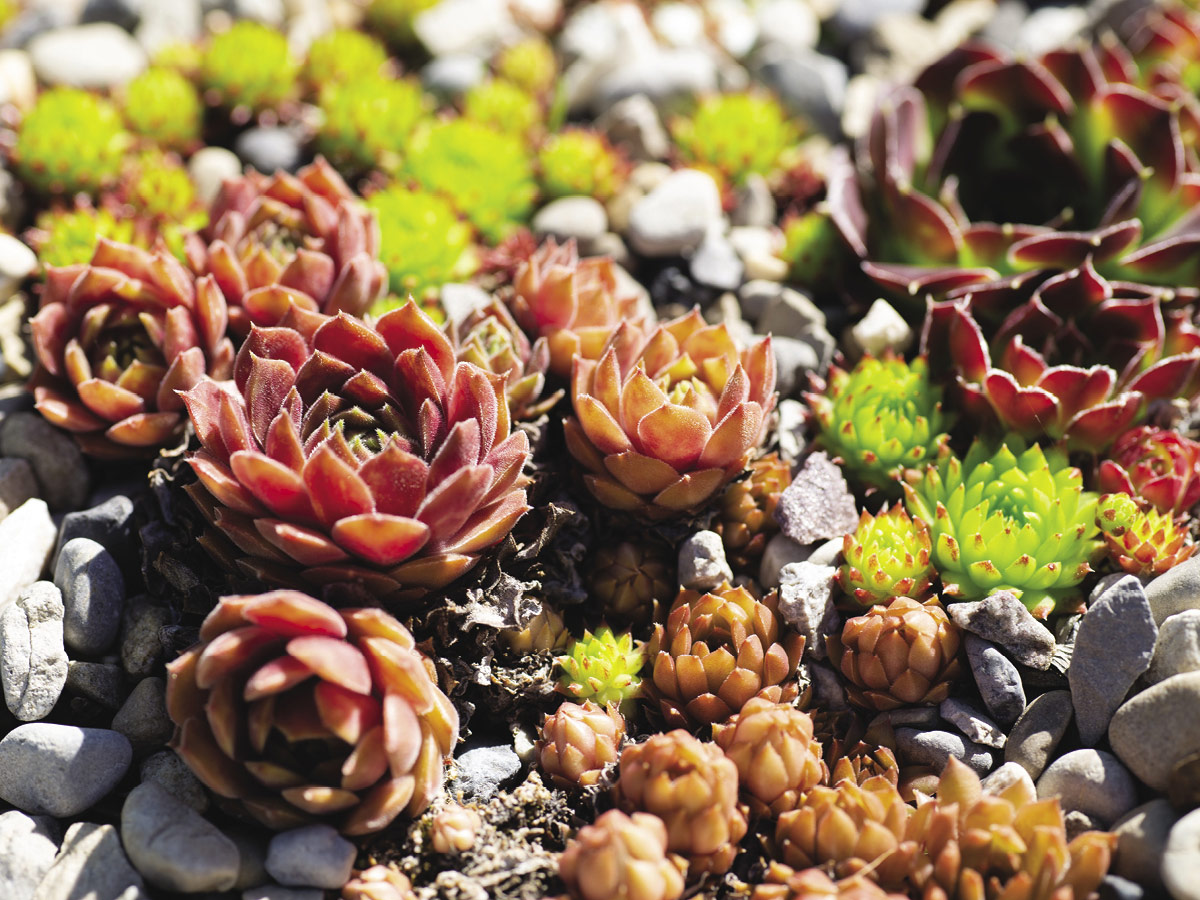
Sempervivums (semps), also called “hen and chicks” or “houseleeks,” hail from Europe and the European mountains. They are tolerant of cold winters and more moisture than other succulents, and their plump rosettes of leaves come in shades and patterns of green, plum, red, brown, blue, and orange. A select group, the “arachnoids,” are covered with fine white hairs. Smaller rosettes branch off the mother, eventually forming large communities. They were once thought common and boring, but these succulents have experienced a resurgence in breeding that has created a plethora of cultivars and varieties with spectacular colours, and patterns. Some of my favourites include ‘Bernstein’ (gold with burnt orange tips), ‘Black’ (deep burgundy), ‘Cafe in July’ (green with deep mahogany tips) and ‘Damask’ (a beautiful dusky red). Colours intensify during very hot or cold weather. Semps are monocarpic, meaning that once a rosette flowers, it sets seed and dies.
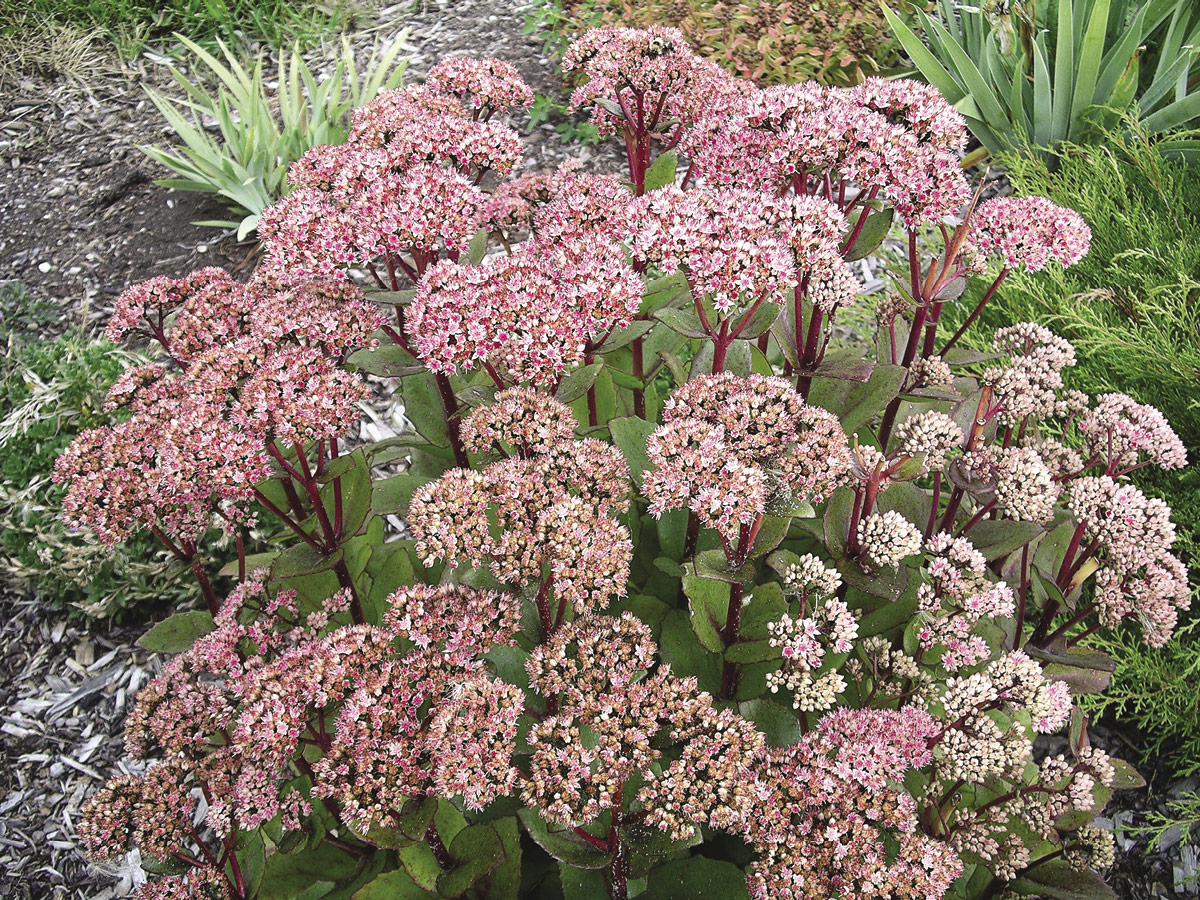
Perfect companions to semps are the groundcover sedums. A number of species and cultivars are available to us. Their shallow, creeping root systems allow plants to spread into dense, weed-smothering mats. Leaves can be spatulate, small, large, needle-like, blue, red, green, gold, orange, and variegated. Clusters of small five-petalled flowers are held on short stalks. Swathes of mixed sedums are a sight to behold whether in or out of bloom. My favourite is S. rupestre ‘Angelina’, which is gold with thin, spiky leaves. An evergreen in our climate, it takes on burnt orange tinges in colder temperatures. Its cousin, ‘Chocolate Ball’, is smaller and more refined, with thin, delicate-looking dark burgundy leaves. S. spurium ‘Fuldaglut’, or ‘Dragon’s Blood’, is a tough workhorse with dark burgundy leaves and dark pink flowers. Once it is established, the only thing to knock it back is overwatering. Creeping sedums are easily propagated by cuttings and division.
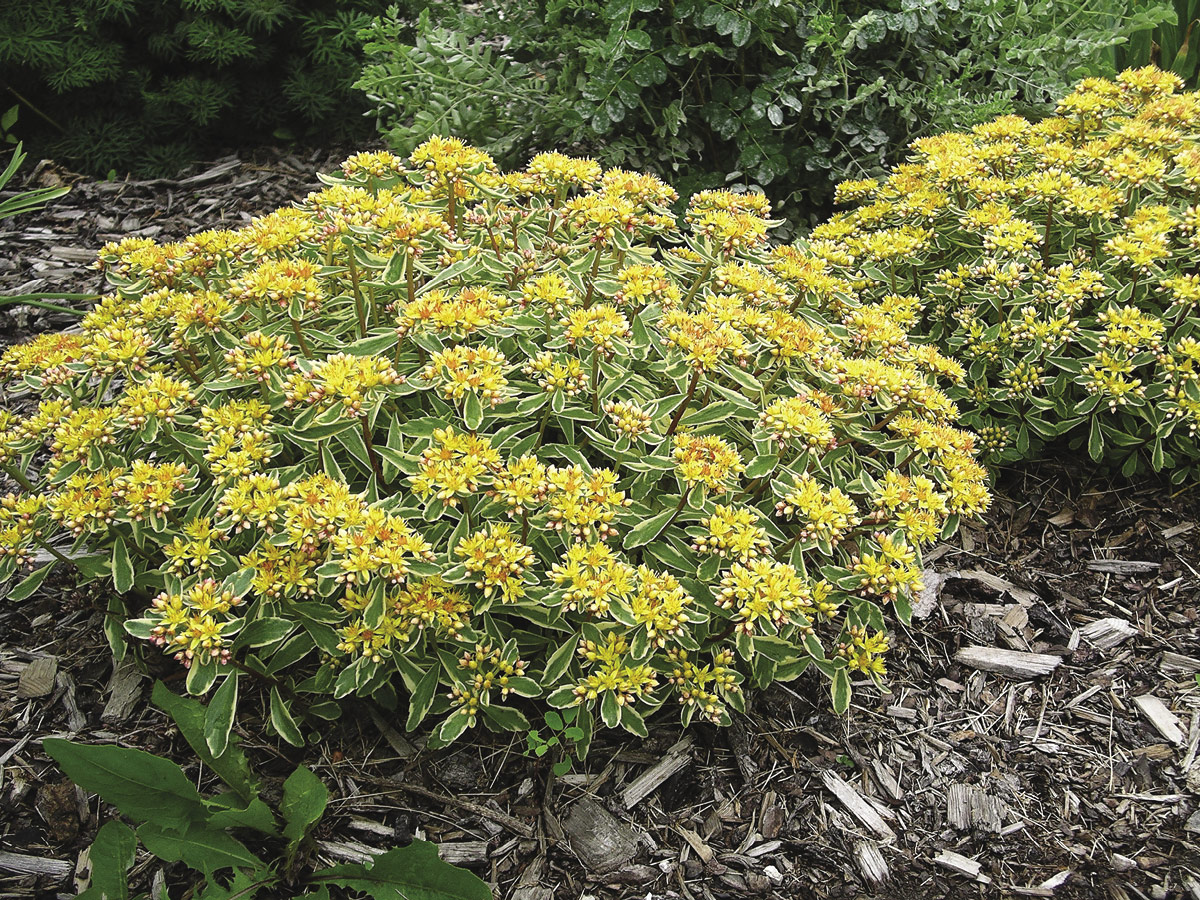
The larger sedums have been reclassified as Hylotelephium. These moderately sized, rounded succulents bloom in early fall. They create interesting shapes amongst lower-growing succulents. Flower buds, resembling small heads of broccoli, emerge in midsummer. The white, pink, or red flower clusters open in early fall and are a magnet for bees and butterflies. Hybridizing has given rise to cultivars with burgundy foliage (‘Matrona’, ‘Purple Prince’, and ‘Chocolate Drop’), variegated foliage (‘Autumn Charm’, ‘Elsie’s Gold’, and ‘Frosty Morn’) and brighter flowers (‘Birthday Party’, ‘Brilliant’, and ‘Neon’). ‘Herbstfreude’, or ‘Autumn Joy’, is a popular old favourite. Left standing, large sedums provide winter interest and seeds for birds.
Along with the semps and sedums, for something different, include a few cacti. Opuntia fragilis, O. polyacantha, O. humifusa, and Escobaria viviparia are four small, hardy native cacti. Requiring excellent drainage, they love it hot and dry, thriving where others wither and die. Flowers occur for an all too short period in early summer in breathtaking shades of pink, yellow, orange, red, and white. To successfully overwinter, the pads lose much of their moisture and appear withered. If possible, keep them covered with snow to protect the pads from winter burn.
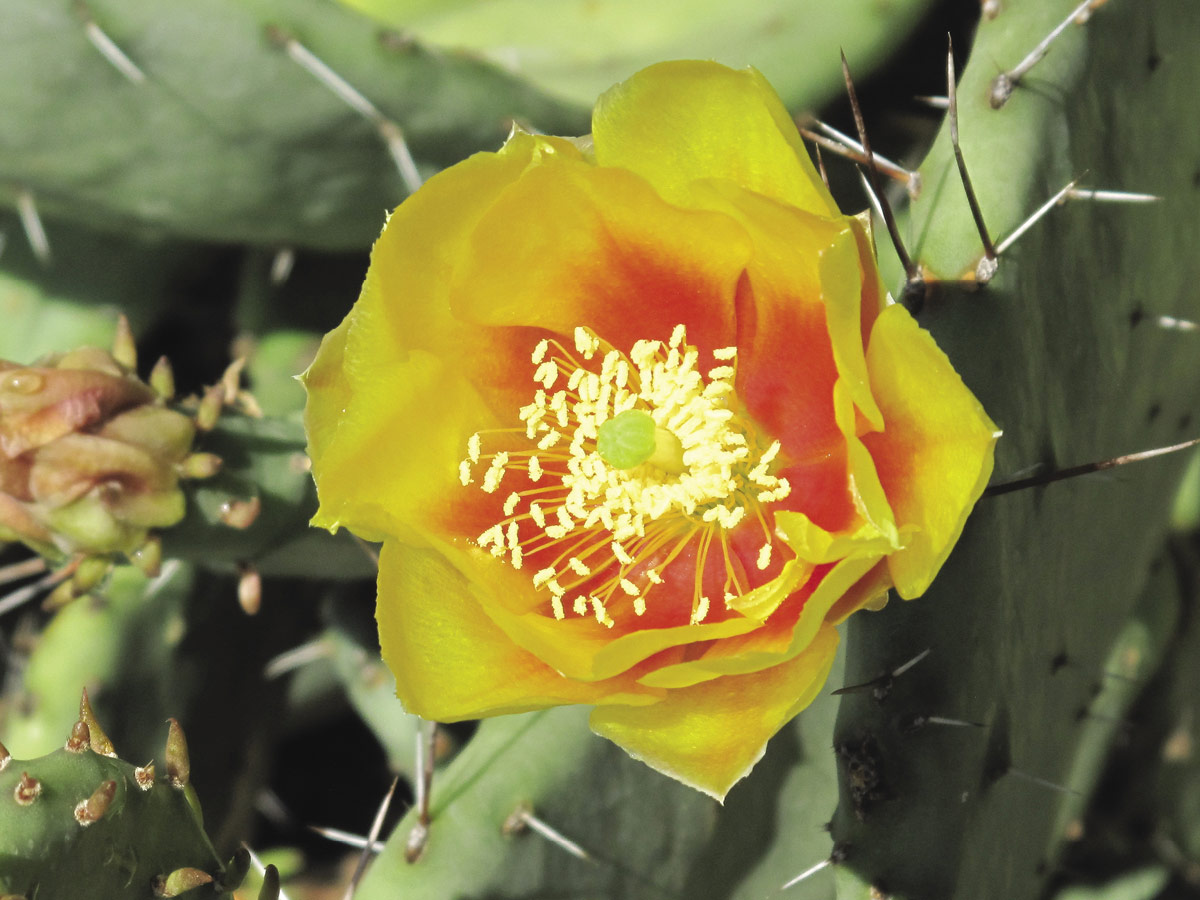
Over time, as my succulent garden grows, I’ll add some less common succulents, as well as an army of drought-tolerant companions. Come summer, it will be a pleasure to just sit in the shade and enjoy.
Elaine Rude
Calgary Horticultural Society

